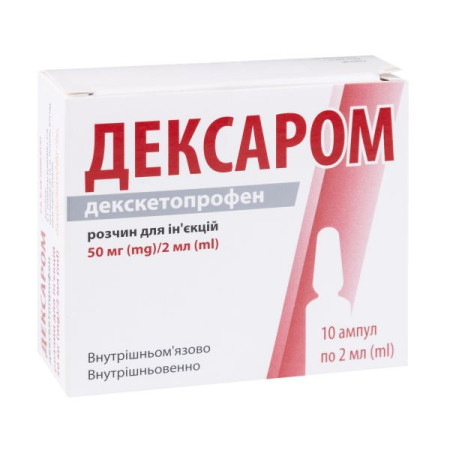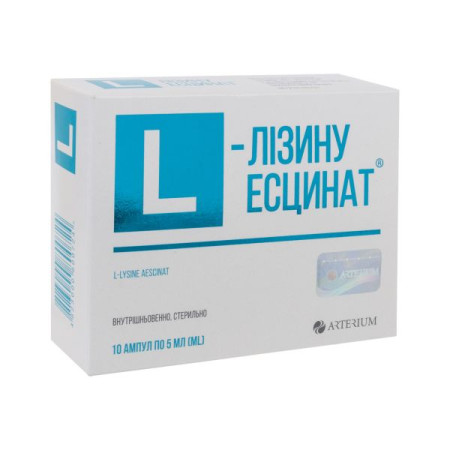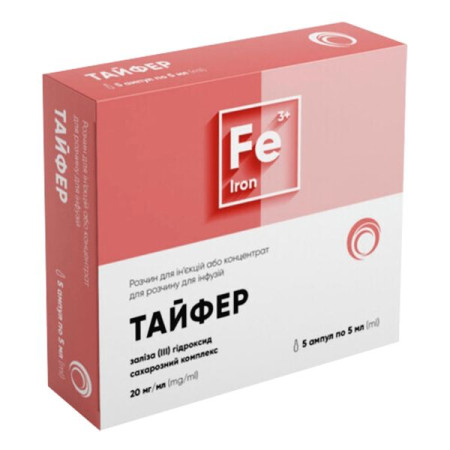Palset solution for injection 50 mcg/ml vial 5 ml No. 1

Instructions Palset solution for injection 50 mcg/ml vial 5 ml No. 1
Composition
active ingredient: palonosetron hydrochloride;
1 ml of solution contains 56.2 μg of palonosetron hydrochloride, equivalent to 50 μg of palonosetron;
excipients: mannitol (E 421); disodium edetate; sodium citrate; citric acid, monohydrate; sodium hydroxide (NaHO) 1N, concentrated hydrochloric acid (HCl) 1N, water for injections.
Dosage form
Solution for injection.
Main physicochemical properties: clear, colorless solution, practically free from particles.
Pharmacotherapeutic group
Antiemetics and anti-nausea agents. Serotonin receptor antagonists (5-HT3). ATC code A04A A05.
Pharmacological properties
Pharmacodynamics
Palset is a selective, high-affinity 5-HT3 receptor antagonist. The mechanism of action is associated with the suppression of the vomiting reflex by blocking serotonin 5-HT3 receptors at the level of neurons of the central nervous system.
Pharmacokinetics
Absorption
The mean half-life after intravenous administration is approximately 40 hours. The mean maximum plasma concentration (Cmax) and area under the concentration-time curve (AUC0-¥) are generally dose-proportional over the dose range of 0.3-90 μg/kg in healthy volunteers and cancer patients.
Following intravenous administration of 0.75 g palonosetron once daily in a single dose to 11 patients with testicular cancer, the mean (± standard deviation (SD)) increase in plasma concentrations from days 1 to 5 was 42 ± 34%. Following intravenous administration of 0.25 mg palonosetron once daily for 3 days to 12 healthy volunteers, the mean (± SD) increase in plasma palonosetron concentrations from days 1 to 3 was 110 ± 45%.
In the course of studies, it was shown that the total exposure (AUC0-¥) with intravenous administration of a dose of 0.25 mg palonosetron 1 time per day for 3 consecutive days is similar to the total exposure with a single intravenous dose of 0.75 mg, however, the Cmax value with a single dose of 0.75 mg is higher.
Distribution.
When administered at recommended doses, palonosetron is widely distributed in the body with a volume of distribution of approximately 6.9-7.9 l/kg. Approximately 62% of the palonosetron dose is bound to plasma proteins.
Biotransformation.
Palonosetron is eliminated by two routes: approximately 40% of the dose is excreted by the kidneys and approximately 50% is metabolized to form two major metabolites that have less than 1% of the 5-HT3 receptor antagonistic activity of palonosetron. In vitro metabolism studies have shown that palonosetron is metabolized by CYP2D6 and, to a lesser extent, CYP3A4 and CYP1A2. However, there are no clinical pharmacokinetic differences between patients with poor and extensive metabolism of CYP2D6 substrates. Palonosetron does not inhibit or induce cytochrome P450 isoenzymes at clinically relevant concentrations. Elimination
After a single intravenous dose of 10 μg/kg [14C]-palonosetron, approximately 80% of the dose was recovered in the urine within 144 hours, with unchanged palonosetron accounting for approximately 40% of the administered dose. After a single intravenous bolus dose in healthy volunteers, the total body clearance of palonosetron was 173 ± 73 ml/min and the renal clearance was 53 ± 29 ml/min. The low rate of total body clearance and the large volume of distribution result in a terminal half-life of approximately 40 hours. In 10% of patients, the mean terminal half-life was greater than 100 hours.
Pharmacokinetics in specific populations.
Elderly patients.
The pharmacokinetics of palonosetron are not affected by age. No dose adjustment is required for elderly patients.
Sex.
Gender does not affect the pharmacokinetics of palonosetron. No dose adjustment is required based on gender.
Pediatric population.
Pharmacokinetic data following a single intravenous dose of palonosetron hydrochloride were obtained in a subgroup of paediatric cancer patients (n = 280) receiving 10 mcg/kg or 20 mcg/kg. A dose-proportional increase in mean AUC was observed with increasing doses from 10 mcg/kg to 20 mcg/kg. Following a single intravenous infusion of 20 mcg/kg, peak plasma concentrations (CP) measured at the end of a 15-minute infusion were highly variable across age groups, with a trend towards lower plasma concentrations in patients younger than 6 years compared to older paediatric patients. The mean half-life was 29.5 hours across age groups (range approximately 20 to 30 hours) following 20 mcg/kg. Total clearance (l/h/kg) in patients aged 12 to 17 years was similar to that in healthy adult volunteers. There was no apparent difference in volume of distribution expressed in l/kg.
Kidney failure.
No dose adjustment is required for patients with renal insufficiency. Pharmacokinetic data in patients on hemodialysis are not available.
Liver failure.
Patients with severe hepatic impairment do not require dose adjustment of palonosetron.
Indication
Prevention of acute nausea and vomiting associated with highly emetogenic or moderately emetogenic chemotherapy in oncology.
Contraindication
Hypersensitivity to the active substance or to any of the excipients of the medicinal product.
Interaction with other medicinal products and other types of interactions
Palonosetron is metabolized primarily by CYP2D6, with minor contributions from CYP3A4 and CYP1A2. In vitro studies indicate that palonosetron does not inhibit or induce cytochrome P450 isoenzymes at clinically relevant concentrations.
Chemotherapeutic drugs.
In preclinical studies, palonosetron was found not to inhibit the antitumor effects of five chemotherapeutic agents tested (cisplatin, cyclophosphamide, cytarabine, doxorubicin, and mitomycin C).
Metoclopramide.
In a clinical study, no significant pharmacokinetic relationship was observed between palonosetron administered as a single intravenous dose and steady-state concentrations of metoclopramide (a CYP2D6 inhibitor) administered orally.
CYP2D6 inducers and inhibitors.
In a population pharmacokinetic analysis, there was no significant effect on palonosetron clearance when co-administered with CYP2D6 inducers (dexamethasone and rifampicin) and CYP2D6 inhibitors (including amiodarone, celecoxib, chlorpromazine, cimetidine, doxorubicin, fluoxetine, haloperidol, paroxetine, quinidine, ranitidine, ritonavir, sertraline or terbinafine). Corticosteroids.
Palonosetron has been safely used concomitantly with corticosteroids. Serotoninergic agents (selective serotonin reuptake inhibitors (SSRIs) and serotonin-norepinephrine reuptake inhibitors (SNRIs)).
Cases of serotonin syndrome have been reported with concomitant use of 5-HT3 antagonists and other serotonergic drugs (including SSRIs and SNRIs).
Other medicines.
Palonosetron has been safely used with analgesics, antiemetics/antinausea medications, antispasmodics, and anticholinergic medications.
Application features
Since palonosetron may increase colonic transit time, patients with a history of constipation or signs of subacute intestinal obstruction should be monitored after administration. Two cases of constipation with fecal impaction requiring hospitalization have been reported with palonosetron 750 mcg.
All doses of palonosetron studied did not result in clinically significant prolongation of the heart rate-corrected QT interval (QTc).
However, as with other 5-hydroxytryptamine 3 (5-HT3) antagonists, this medicinal product should be used with caution in patients with or at risk of developing QT prolongation. These patients include those with a personal or family history of QT prolongation, electrolyte disturbances, congestive heart failure, bradyarrhythmias, cardiac conduction disorders, and those receiving antiarrhythmic medicinal products or other medicinal products known to prolong the QT interval or electrolyte disturbances. Hypokalaemia and hypomagnesaemia should be corrected before using a 5-HT3 antagonist.
Cases of serotonin syndrome have been reported with the use of 5-HT3 antagonists as monotherapy or in combination with other serotonergic drugs (including SSRIs and SNRIs). Close monitoring of patients for symptoms suggestive of serotonin syndrome is recommended.
Palset should not be used to prevent or treat nausea and vomiting in the days following a chemotherapy session, unless such use precedes another chemotherapy session.
Important information about excipients.
This medicinal product contains less than 1 mmol (23 mg) sodium/dose, i.e. essentially 'sodium-free'.
Use during pregnancy or breastfeeding
Pregnancy.
There are no clinical data on the use of palonosetron during pregnancy. Animal studies do not indicate direct or indirect harmful effects of this medicinal product on pregnancy, embryonal/foetal development, parturition or postnatal development of the offspring. There is no experience of the use of palonosetron during pregnancy in humans, therefore palonosetron should not be used in pregnant women unless the physician considers it necessary when the benefit to the woman outweighs the risk to the fetus/child.
Breastfeeding period.
Since there is no data on the ability of palonosetron to penetrate into breast milk, breastfeeding should be discontinued during therapy with this drug.
Fertility.
There are no data on the effect of palonosetron on fertility.
Ability to influence reaction speed when driving vehicles or other mechanisms
Since palonosetron may cause dizziness, drowsiness, or fatigue, patients should be warned to refrain from activities requiring rapid psychomotor reactions.
Method of administration and doses
Palset should only be prescribed before chemotherapy. This medicine should be administered by a healthcare professional under appropriate medical supervision.
Dosage.
Adults.
Palonosetron 250 mcg is administered as a single intravenous bolus over 30 seconds approximately 30 minutes before the start of chemotherapy. The efficacy of Palset in preventing nausea and vomiting induced by highly emetogenic chemotherapy may be enhanced by the addition of a corticosteroid prior to chemotherapy.
Elderly patients.
Elderly patients do not require dose adjustment.
Children (ages 1 month to 17 years).
Palonosetron at a dose of 20 mcg/kg (maximum total dose should not exceed 1500 mcg) is administered as a single 15-minute intravenous infusion, starting approximately 30 minutes before the start of chemotherapy.
The safety and efficacy of Palset in children under 1 month of age have not been established. There are no data on this. There are limited data on the use of the drug for the prevention of nausea and vomiting in children under 2 years of age. Hepatic impairment.
No dose adjustment is required for patients with hepatic impairment.
Kidney failure.
No dose adjustment is required for patients with renal insufficiency.
There are currently no data available on the use of this medicinal product in patients with end-stage renal disease undergoing haemodialysis. Method of administration.
For intravenous use.
Children.
The medicine is used in children aged 1 month to 17 years.
Overdose
No cases of overdose have been reported so far.
In clinical trials, doses up to 6 mg were used. In the group receiving the highest dose, the incidence of adverse reactions was similar to that observed in the other groups; no dose-related reactions were observed. In the unlikely event of overdose, supportive therapy is indicated. Dialysis has not been studied, but given the large volume of distribution of the drug, dialysis is unlikely to be effective in treating overdose.
Pediatric population.
There were no reports of overdose during clinical trials involving the pediatric population.
Adverse reactions
In clinical trials with a dose of 250 mcg (total number of participants – 633), the most frequently observed adverse reactions that were at least possibly related to palonosetron hydrochloride were headache (9%) and constipation (5%). The following adverse reactions were observed in clinical trials and were considered possibly or probably related to palonosetron hydrochloride. They are classified by frequency as follows: common (≥1/100 to
Table 1
| Organ system classes | Often | Infrequently | Very rare |
| On the part of the immune system | Hypersensitivity, anaphylaxis, anaphylactic/anaphylactoid reactions and shock | ||
| From the side of metabolism, metabolism | Hyperkalemia, metabolic disorders, hypocalcemia, hypokalemia, anorexia, hyperglycemia, decreased appetite | ||
| From the psyche | Anxiety, euphoric mood | ||
| From the nervous system | Headache, dizziness | Somnolence, insomnia, paraesthesia, hypersomnia, peripheral sensory neuropathy | |
| From the organs of vision | Eye irritation, amblyopia | ||
| From the side of the organs of hearing and vestibular apparatus | Motion sickness, sensation of noise/ringing in the ears | ||
| From the heart | Tachycardia, bradycardia, extrasystole, myocardial ischemia, sinus tachycardia, sinus arrhythmia, supraventricular extrasystole | ||
| From the vascular side | Arterial hypotension, arterial hypertension, vein discoloration, varicose veins | ||
| Respiratory, thoracic and mediastinal disorders | Hiccup | ||
| Gastrointestinal tract | Constipation, diarrhea | Dyspepsia, abdominal pain, abdominal pain upper, dry mouth, flatulence | |
| Liver and biliary tract | Hyperbilirubinemia | ||
| Skin and subcutaneous tissue disorders | Allergic dermatitis, itchy rash | ||
| Musculoskeletal and connective tissue disorders | Arthralgia | ||
| Renal and urinary disorders | Urinary retention, glycosuria | ||
| General disorders and administration site conditions | General weakness, pyrexia, fatigue, feeling hot, influenza-like illness | Injection site reaction* | |
| Increased transaminase levels, prolonged QT interval on ECG |
° Data obtained during post-marketing surveillance.
* Including burning sensation, skin tightness, discomfort and pain.
Pediatric population.
In clinical trials in the paediatric population for the prevention of nausea and vomiting induced by moderately and highly emetogenic chemotherapy, 402 patients received a single dose of palonosetron (3, 10 or 20 mcg/kg). Common and uncommon adverse reactions reported with palonosetron are listed in Table 2, with no adverse reactions reported at an incidence greater than 1%.
Table 2
| Organ system classes | Often | Infrequently |
| From the nervous system | Headache | Dizziness, dyskinesia |
| Cardiovascular system | Conduction disorders with prolonged QT interval on ECG, sinus tachycardia | |
| Respiratory, thoracic and mediastinal disorders | Cough, shortness of breath, nosebleed | |
| Skin and subcutaneous tissue disorders | Allergic dermatitis, itching, skin lesions, urticaria | |
| General disorders and administration site conditions | Pyrexia, infusion site pain, infusion site reaction, pain |
Adverse reactions were evaluated in pediatric patients receiving palonosetron prior to chemotherapy for up to 4 cycles.
Reporting of suspected adverse reactions.
Reporting suspected adverse reactions after the marketing authorisation of a medicinal product is an important procedure. It allows for continued monitoring of the benefit-risk balance of the medicinal product in question. Healthcare professionals should report any suspected adverse reactions via the national reporting system.
Expiration date
5 years.
After opening the vial, the solution should be used immediately and any unused solution should be discarded.
Storage conditions
This medicinal product does not require any special storage conditions. Keep out of the reach of children.
Packaging
5 ml of solution in a vial; 1 vial in a cardboard box.
Vacation category
According to the recipe.
Producer
RAPHARM SA
Address
Tesi Pousi-Xatsi Agios Louka, Paiania Attiki, TK 19002, TO 37, Greece
There are no reviews for this product.
There are no reviews for this product, be the first to leave your review.
No questions about this product, be the first and ask your question.













